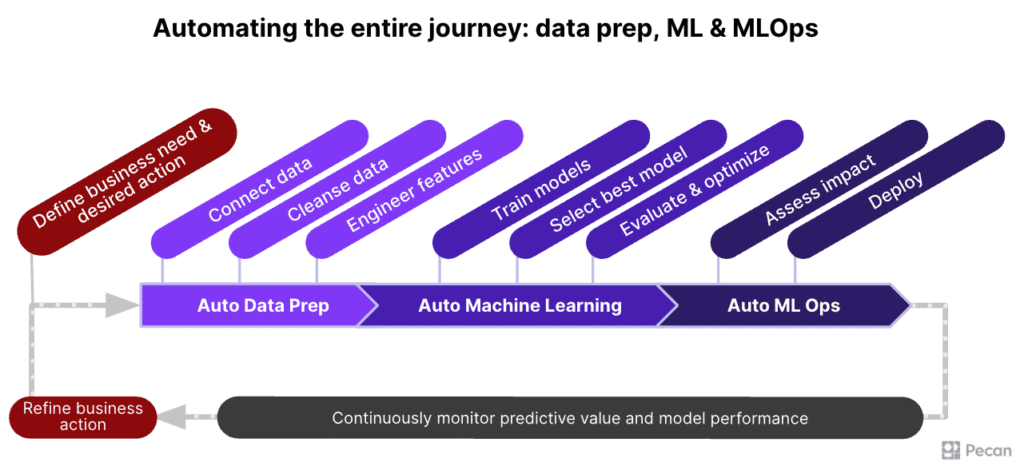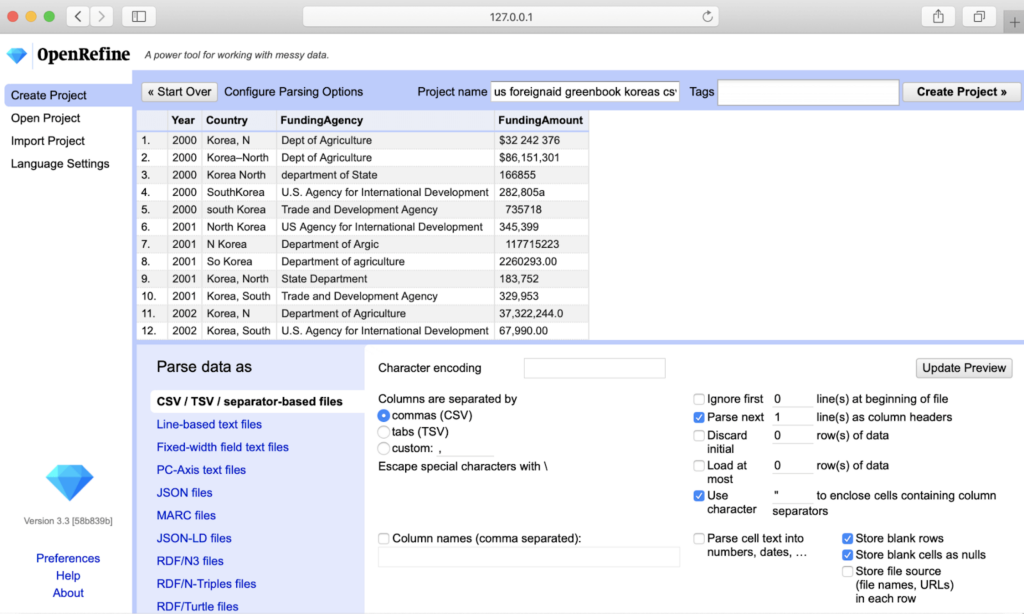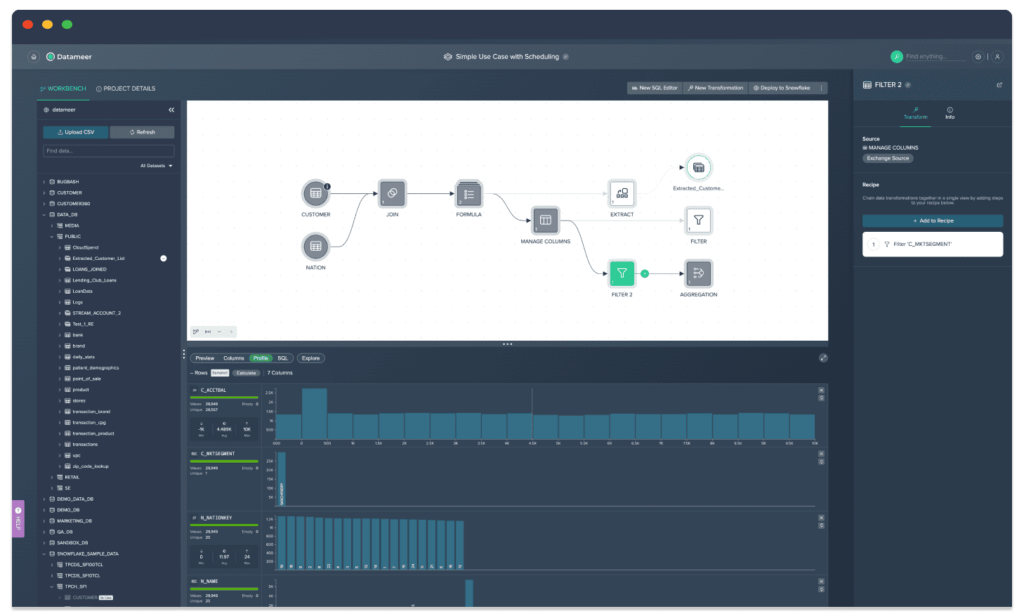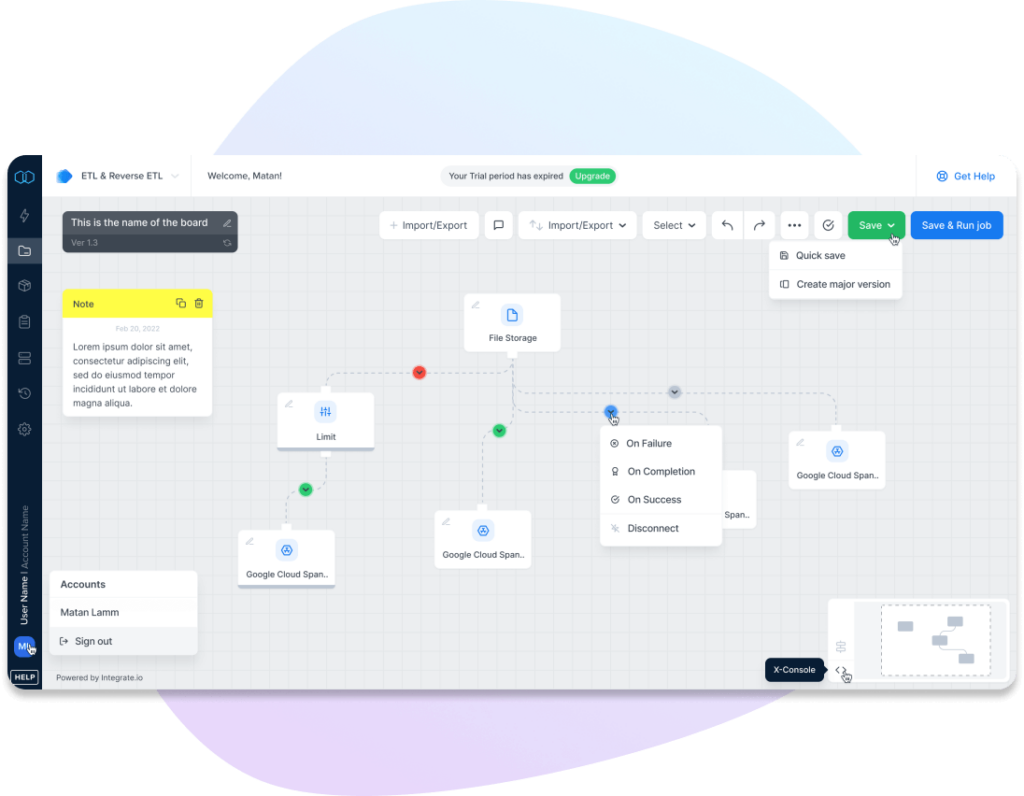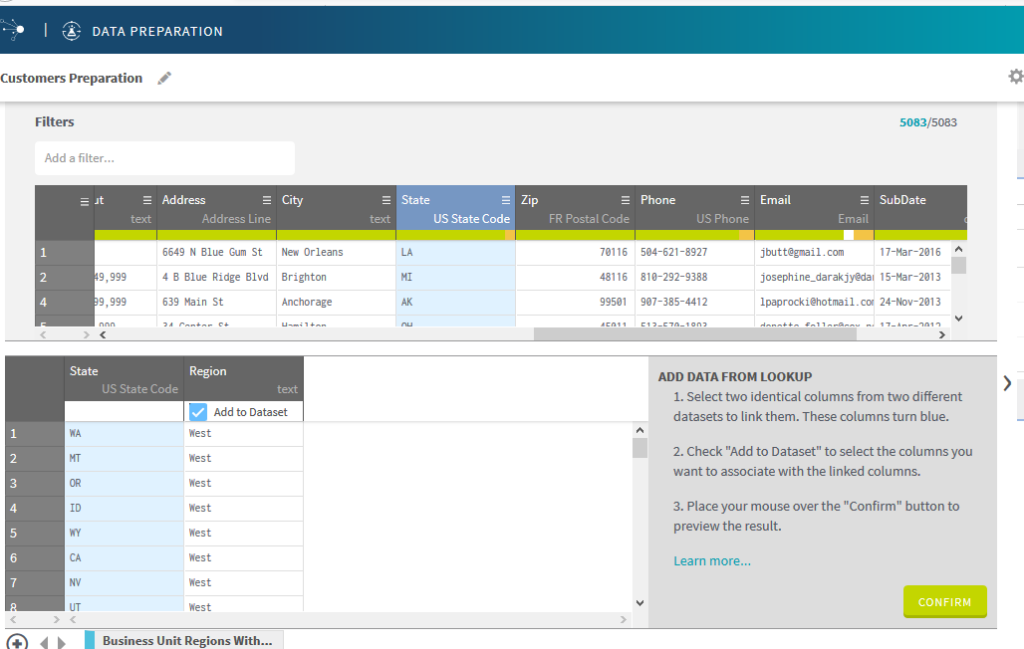How can you build accurate forecasts if you’re using information that’s incorrect or outdated? You can’t.
The problem is cleaning and managing that data can seem like monumental tasks.
With the right data cleansing software, you can easily organize, deduplicate, standardize, and enrich your data. That way, your predictive models can provide an accurate picture of real future opportunities.
Read on to discover the top data cleansing tools for 2024 and what to consider when making your choice.
What’s data cleansing?
Data cleansing is the process of cleaning up databases so that you can use that data to provide accurate predictions.
If your database has corrupt, missing, or inaccurate data, it'll incorrectly skew your predictive models. Your output won’t reflect your opportunities, as they’ll be based on the wrong information.
Data cleansing involves detecting, correcting, and removing corrupt or inaccurate records from a database. The software standardizes data, validates its integrity, and removes any duplicates.
By eliminating inconsistencies and inaccuracies, you enhance data quality.
If you’re creating predictive models, this is a foundational step in ensuring the efficacy of these models.
If your predictive models are built and trained on poor-quality data, they won’t provide the accurate predictions you need to make smart business decisions.
This impacts your bottom line. More than 60% of data engineers say poor data impacts revenue by 25% or more.
If you don’t properly clean your data, you miss opportunities and act on incorrect information, affecting your overall revenue.
What does data cleansing software do?
Data cleansing software performs various tasks to correct inaccurate data and enhance its quality.
Here’s how the data cleansing process works:
- Data profiling: The software identifies and processes the different data types in your database. By creating data profiles, it understands how to spot errors or inconsistencies.
- Data parsing: The tool breaks your data into standardized units so that it’s easy to evaluate and analyze.
- Data standardization: Data cleaning tools standardize the data in a consistent format. This might mean converting dates and times to one format throughout or correcting typos.
- Data validation: The software ensures that all data fits the proper formats and predetermined criteria. For instance, if the data should be a Y/N answer, it ensures nothing is included outside of “Y” or “N.”
- Data deduplication: Your cleaning tool will find duplicates in your dataset and remove them. That way, they’re not counted twice when making predictions.
- Data matching and merging: It finds similar data from different sources and matches them to combine the records. This is different from deduplication, where there are two exact copies. For instance, you may have a customer’s previous record linked to an old address. It’ll integrate this with the latest account information.
- Data imputation: Some missing or incorrect data can be solved using statistical methods. The software can provide a reasonable replacement based on logical computations.
- Data enrichment: The software will identify missing or incorrect records and add new data from external sources. This could be contact information, demographic profiles, or purchase history data, for example.
- Data scrubbing: The scrubbing tool automatically corrects inconsistencies and errors where it can and suggests corrections for those it can’t.
- Data monitoring: Your data cleansing tool will continue to track data quality over time. It’ll alert you when anomalies or inaccuracies appear.
The wellness brand used Pecan AI to cleanse its data and make prediction models based on this enhanced data. Leveraging this highly accurate, AI-improved data, Pecan’s prediction models helped Hydrant triple revenue per customer.
Right now, data analysts spend almost 40% of their time on data preparation and cleansing.
With an AI-powered tool like Pecan, you can accelerate the data-cleaning process to make accurate predictive models within two weeks.
Top 7 data cleansing tools for 2024
Clean data drives accurate predictions. Don’t leave your databases in a mess. Choose a data cleaning software that fits your organization’s needs.
Check out this breakdown of the top seven data cleansing tools.
1. Pecan AI: Best for AI-powered data cleansing
Pecan AI is an all-in-one AI-powered predictive analytics tool. It cleanses data so it’s ready for analysis. Notably, Pecan AI also does the predictive modeling for you. It’s fast, precise, and easy to use, even if you’re not tech-savvy.
It can handle disorganized data and auto-prepares it for AI modeling. Pecan AI doesn’t just identify and remove duplicate records. It also auto-standardizes the data format and can enrich it with additional information.
Pecan’s automated feature engineering enables you to build on your data and use it to add new variables to power your predictive model.
Pecan AI features include AI-powered data cleansing, deduplication and matching, standardization and enrichment, smart data profiling, advanced anomaly detection, and automatic data validation.
Pecan AI integrations include Salesforce, Snowflake, Google BigQuery, Amazon Redshift, and Oracle.
Pricing: Starts at $50 per month
What it's great at:
- Ease of use
- Fast data processing
- Data cleansing accuracy
- Handling disorganized data
- Improving as it learns
Areas of limitation:
- Requires a lot of data
Book a demo now to see how Pecan AI can accelerate and enhance predictive modeling with highly accurate data cleansing processes.
2. DemandTools: Best for Salesforce data
Why DemandTools?
DemandTools is a secure data quality platform that enables organizations to clean and manage Salesforce data quickly.
It's a cloud-based platform for sales and marketing teams using Salesforce that need clean data to improve lead scoring, predict customer churn, and forecast sales.
DemandTools features include data deduplication, standardization, enrichment, and quality monitoring.
DemandTool integrations include Google Sheets, Tableau, Power BI, QlikView, and Looker.
Pricing: Starts at $11 per month
What it’s great at:
- Real-time data cleansing
- Scalability
- Data security
Areas of limitation
- Expensive for small businesses
- Limited to Salesforce
- Slow to process large datasets when complex rules are applied
3. OpenRefine: Best for data cleansing on a budget
Why OpenRefine?
OpenRefine is a free, open-source data cleansing tool. It’s both easy to use and customizable. It works for organizations of all sizes, but it’s best suited to small businesses and startups with tight budgets.
OpenRefine features include data profiling and visualization, data cleansing and transformation features, and data enrichment and matching.
OpenRefine integrations include Google Sheets, Excel, databases, and JSON.
Pricing: Free
What it's great at:
- User-friendly experience
- Customizability
- Affordability
Areas of limitation:
- Sometimes, it’s slow to process large datasets
- Fewer advanced features available on commercial tools
4. Datameer: Best for data cleansing big data
Why Datameer?
Datameer is specifically designed for big data. It handles large, complex datasets quickly and efficiently. It's a smart choice for large organizations looking to cleanse big data for analytics and machine learning.
Datameer features include profiling, visualization, enriching, quality monitoring, and governance.
Datameer integrations: Hadoop, Spark, Hive, Impala, and Amazon Redshift.
Pricing: Starts at $100 a year
What it's great at:
- Big data processing
- Speed and efficiency
- Governance
Areas of limitation:
- It’s expensive to scale
- Steep learning curve
5. Integrate.io: Best for data cleansing for data pipelines
Why Integrate.io?
Formerly Xplenty, Integrate.io is a no-code data pipeline platform with cleansing features. It focuses on cleansing data for your data pipelines. Integrate.io is a user-friendly option for cleaning data before it goes into storage.
Integrate.io features include data profiling, transformation, enrichment, matching, quality monitoring, and pipeline orchestration.
Integrate.io integrations include Salesforce, Amazon Redshift, BigCommerce, Shopify, and HubSpot.
Pricing: Starts at $15,000 a year
What it's great at:
- Scalability
- Cloud-based cleansing
- Integration options
Areas of limitation:
- It’s pricey
- It only focuses on pipeline cleansing
6. Talend Open Studio: Best for open source data cleansing
Why Talend Open Studio?
Talend Open Studio is a data integration platform with data cleansing features. It’s a great budget-friendly option, as it’s free and open source. It’s highly customizable, so it’s well suited to companies with specific data cleaning needs.
Talend Open Studio features include profiling, visualization, transformation, enrichment, quality monitoring, and pipeline orchestration.
Talend Open Studio integrations include Amazon databases, Salesforce, Zendesk, and Google Cloud Storage.
Pricing: Free
What it's great at:
- Customizability
- Data pipeline orchestration
- Integration options
Areas of limitation:
- Complex for new users
- It’s missing advanced commercial features
7. IBM InfoSphere Information Server: Best for enterprise data cleansing
Why IBM Infosphere Information Server?
IBM Infosphere Information Server is a powerful enterprise-level tool. It offers a wide range of data cleaning features that handle large, complex datasets easily.
IBM Infosphere Information Server features include profiling, transformation, enrichment, quality monitoring, governance, and master data management.
IBM Infosphere Information Server integrations include BigQuery, Hive, Amazon S3, and Cassandra.
Pricing: Custom
What it's great at:
- Enterprise scalability
- Master data management
- Quality control
Areas of limitation:
- It’s very expensive
- Few integrations compared to other tools
What to consider when choosing data cleansing software
Powerful data cleansing solutions are paramount to well-ordered data. As businesses collect and use more data to drive decisions, the need for good tools to optimize that data increases.
But what factors should guide your decision when choosing software to clean your data?
1. Ease of use
The ideal software should have an intuitive and user-friendly interface so it’s simple to visualize data.
A user-friendly approach ensures that even those who aren’t ‘tech-savvy’ can improve and maintain data integrity.
2. Features
Look for a software suite that boasts a comprehensive range of cleaning features. Otherwise, you’ll juggle separate tools to handle data cleaning tasks.
Consider whether the tool has deduplication, standardization, and validation features. Data enrichment and error detection features are also helpful.
3. AI-powered automation
AI-powered tools with data cleaning capabilities, like Pecan AI, can provide better efficiency. You can detect anomalies, pinpoint errors, and ensure corrections automatically. This speeds up data cleaning processes and improves accuracy.
4. Customization and flexibility
Every business has unique data needs. Your software should be flexible and adaptable enough for you to create custom logic and business rules. You can also adjust matching thresholds or set up custom reporting. Consider how much flexibility there is to tailor your workflows.
5. Data security
High data security is non-negotiable in today’s world. Not only do breaches lead to a loss of customer trust, but you’re also vulnerable to penalties and legal repercussions.
6. Integration capabilities
Make sure the software you choose integrates with your existing tools. This streamlines workflows and makes it easier to integrate clean data into your existing business processes.
7. Scalability
As your business grows, your databases grow, too. Make sure you pick a tool that can scale as your datasets scale. Otherwise, you’ll experience bottlenecks where the cleansing process is too slow to keep up with incoming data streams.
8. Pricing
Even if budgetary constraints tie you, you still need data cleansing software. Without it, your interpretations and predictions simply won’t work right. Find affordable data cleansing tools that meet your requirements without compromising many key features.
Fuel predictive intelligence with pristine data
With the right data cleansing software, you’ll find it far easier to maintain data integrity. With cleaner data, you can make more accurate data-driven decisions to grow your company.
Leveraging AI tools to power data cleansing provides you with highly precise quality data quickly.
But if you’re already cleaning data to create predictive models, why not pick an all-in-one tool.
Pecan AI cleanses and enriches your data before creating powerful predictive models that automatically learn to improve over time.
For squeaky-clean data and next-generation predictive analytics, try Pecan AI for free.


